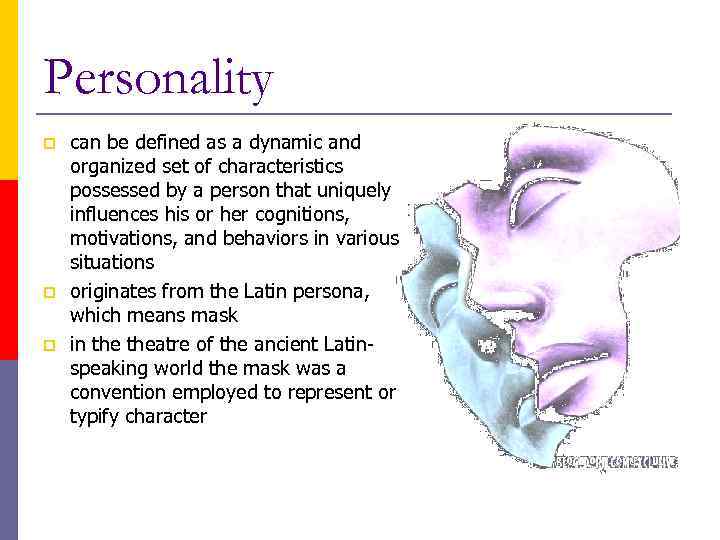
Personality p p p can be defined as a dynamic and organized set of characteristics possessed by a person that uniquely influences his or her cognitions, motivations, and behaviors in various situations originates from the Latin persona, which means mask in theatre of the ancient Latinspeaking world the mask was a convention employed to represent or typify character

Personality theories Psychoanalytic theory Behaviorism Humanistic theory Sigmund Freud B. F. Skinner Abraham Maslow
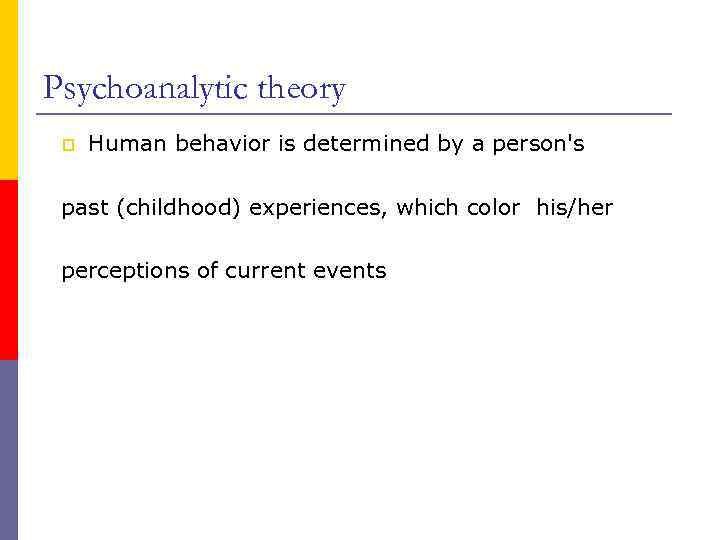
Psychoanalytic theory p Human behavior is determined by a person's past (childhood) experiences, which color his/her perceptions of current events
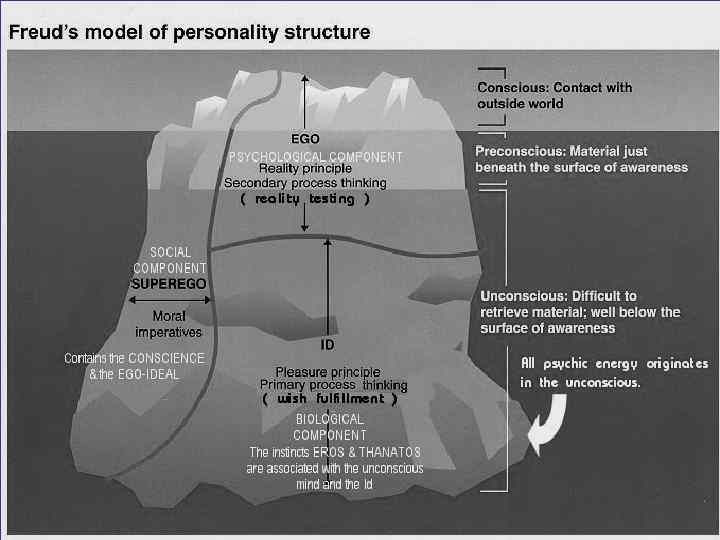
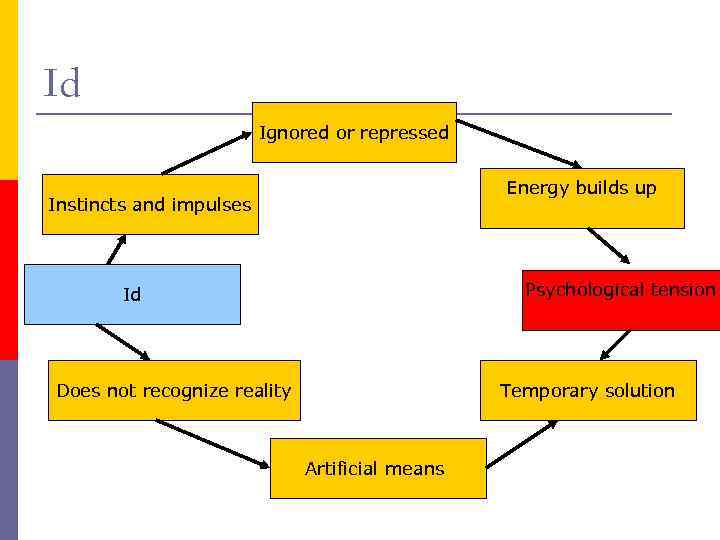
Id Ignored or repressed Energy builds up Instincts and impulses Psychological tension Id Does not recognize reality Temporary solution Artificial means
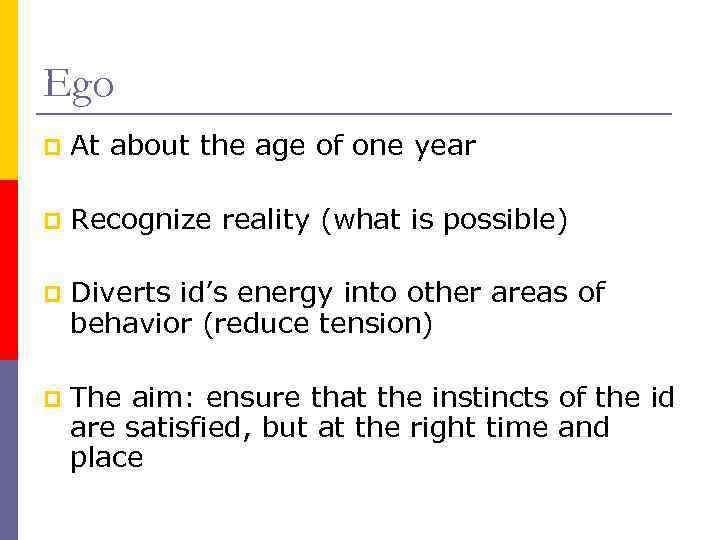
Ego p At about the age of one year p Recognize reality (what is possible) p Diverts id’s energy into other areas of behavior (reduce tension) p The aim: ensure that the instincts of the id are satisfied, but at the right time and place
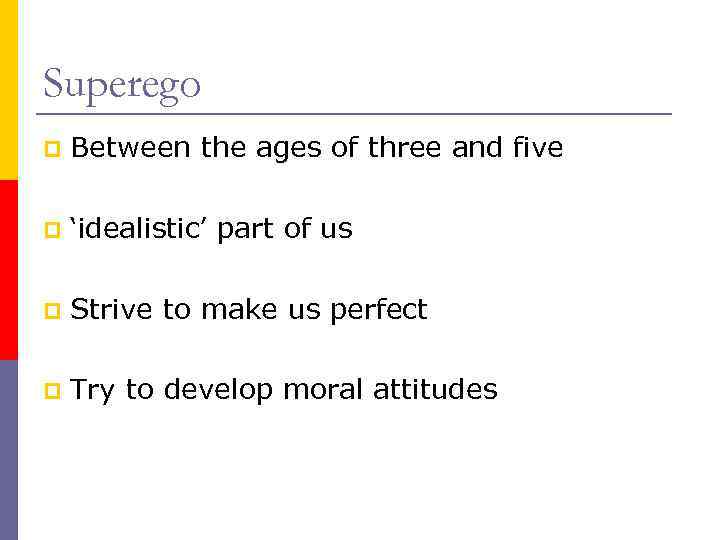
Superego p Between the ages of three and five p ‘idealistic’ part of us p Strive to make us perfect p Try to develop moral attitudes
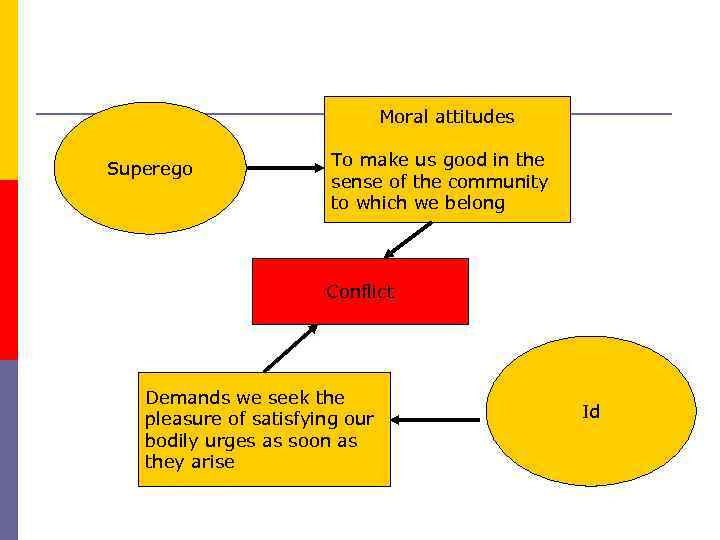
Moral attitudes Superego To make us good in the sense of the community to which we belong Conflict Demands we seek the pleasure of satisfying our bodily urges as soon as they arise Id
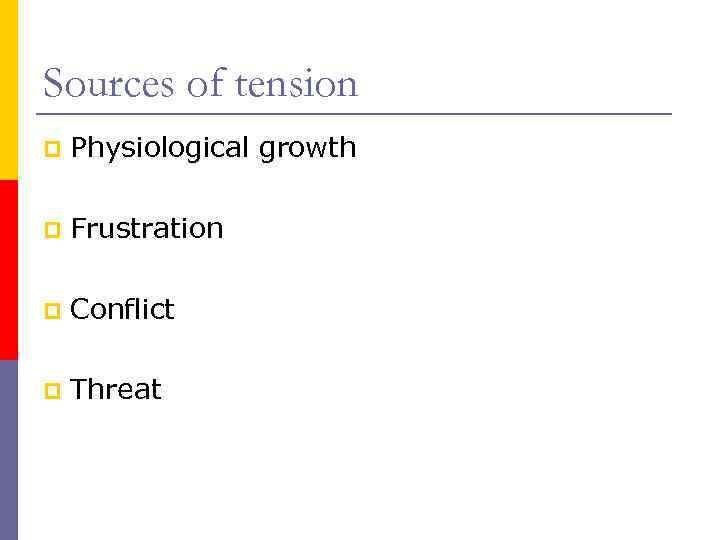
Sources of tension p Physiological growth p Frustration p Conflict p Threat
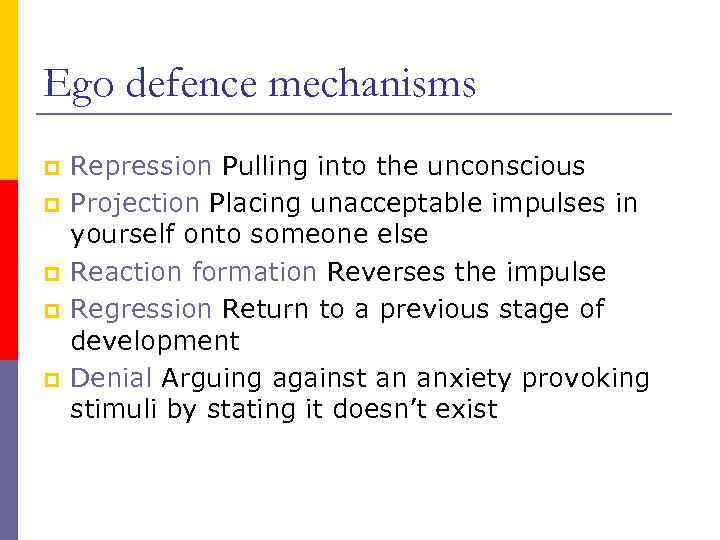
Ego defence mechanisms p p p Repression Pulling into the unconscious Projection Placing unacceptable impulses in yourself onto someone else Reaction formation Reverses the impulse Regression Return to a previous stage of development Denial Arguing against an anxiety provoking stimuli by stating it doesn’t exist
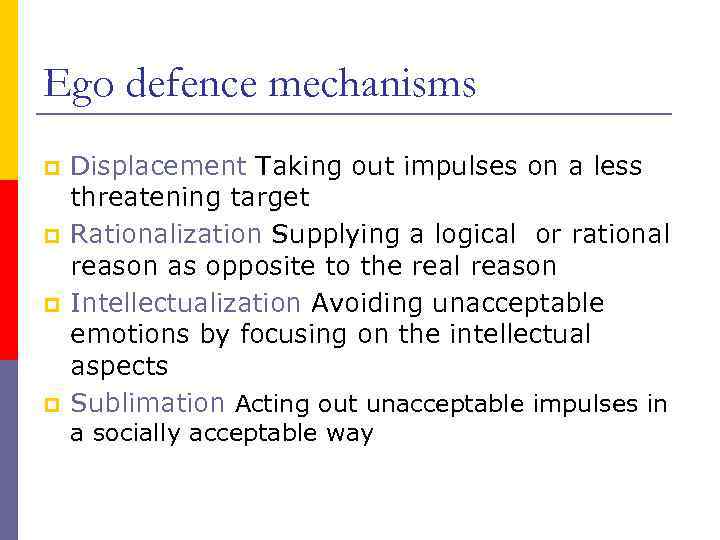
Ego defence mechanisms p p Displacement Taking out impulses on a less threatening target Rationalization Supplying a logical or rational reason as opposite to the real reason Intellectualization Avoiding unacceptable emotions by focusing on the intellectual aspects Sublimation Acting out unacceptable impulses in a socially acceptable way
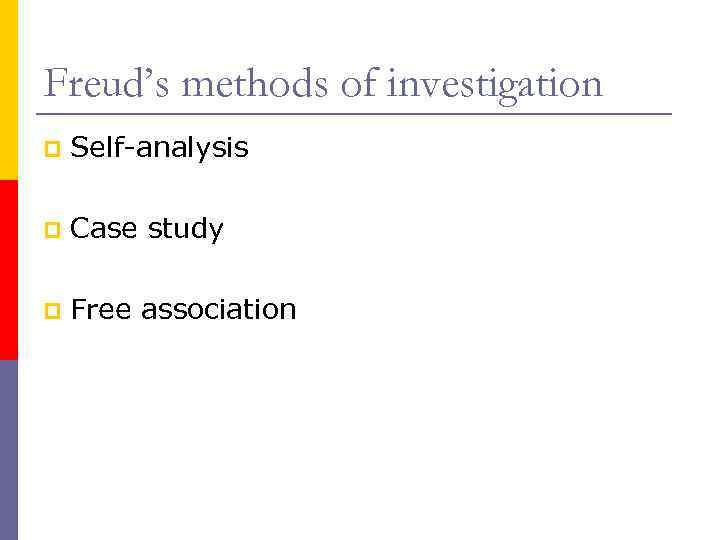
Freud’s methods of investigation p Self-analysis p Case study p Free association
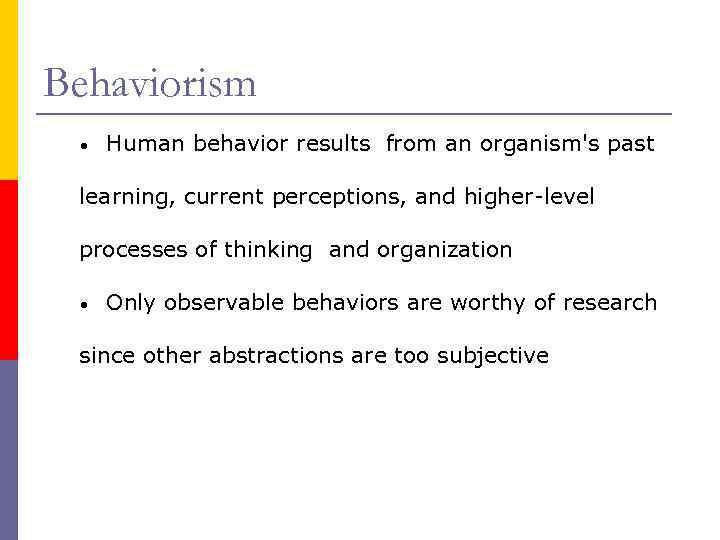
Behaviorism • Human behavior results from an organism's past learning, current perceptions, and higher-level processes of thinking and organization • Only observable behaviors are worthy of research since other abstractions are too subjective
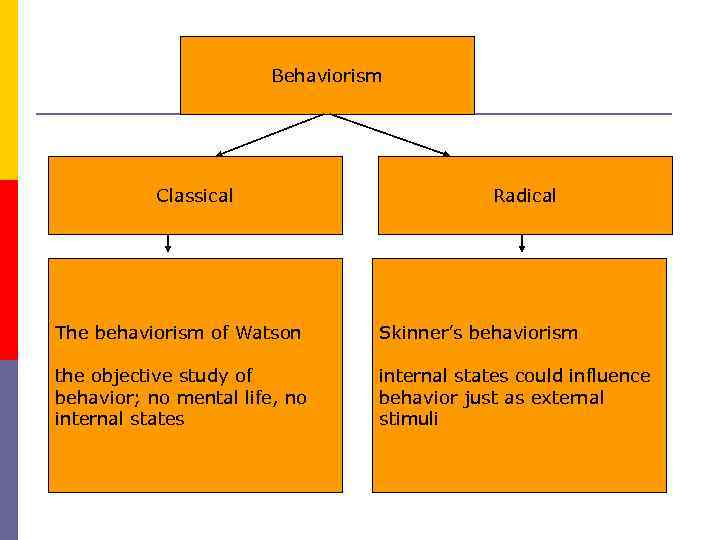
Behaviorism Classical Radical The behaviorism of Watson Skinner’s behaviorism the objective study of behavior; no mental life, no internal states could influence behavior just as external stimuli
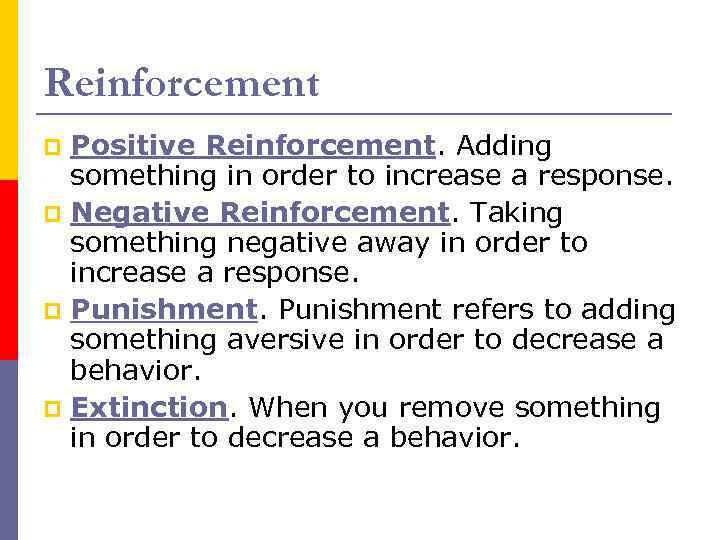
Reinforcement Positive Reinforcement. Adding something in order to increase a response. p Negative Reinforcement. Taking something negative away in order to increase a response. p Punishment refers to adding something aversive in order to decrease a behavior. p Extinction. When you remove something in order to decrease a behavior. p
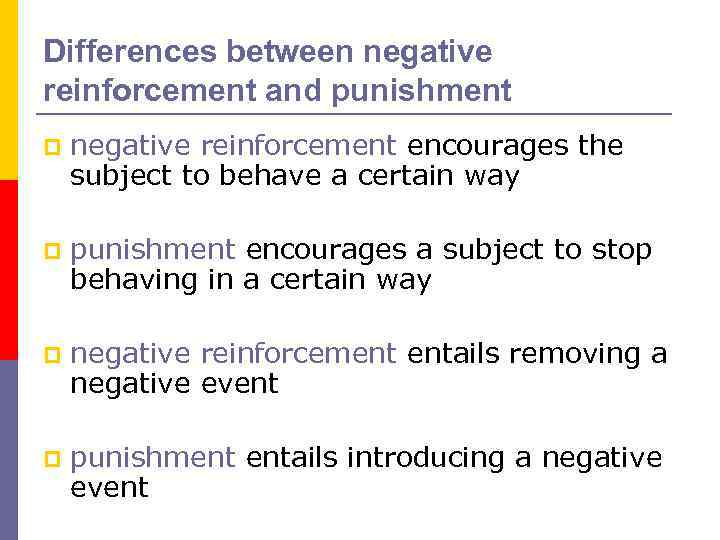
Differences between negative reinforcement and punishment p negative reinforcement encourages the subject to behave a certain way p punishment encourages a subject to stop behaving in a certain way p negative reinforcement entails removing a negative event p punishment entails introducing a negative event
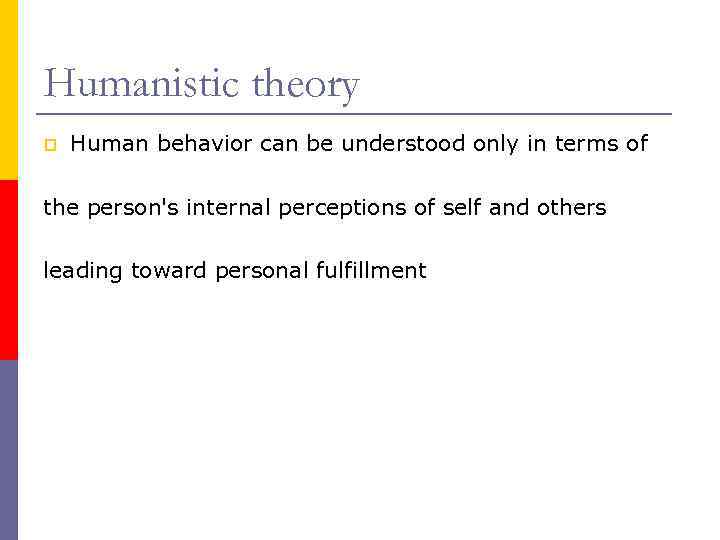
Humanistic theory p Human behavior can be understood only in terms of the person's internal perceptions of self and others leading toward personal fulfillment
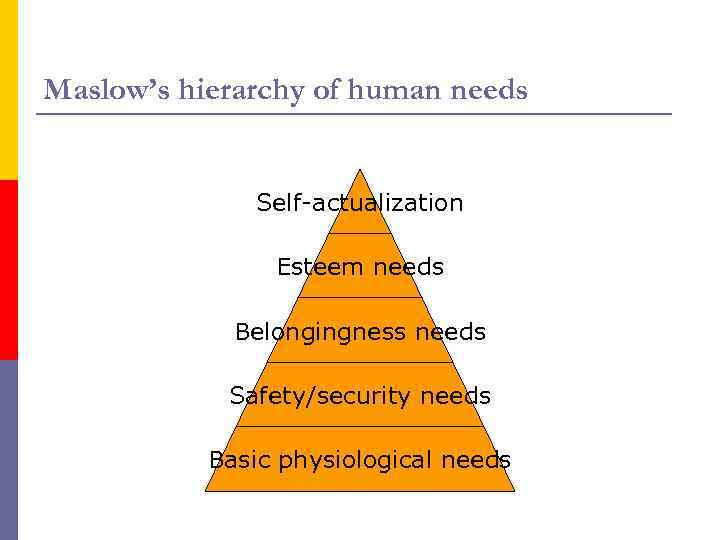
Maslow’s hierarchy of human needs Self-actualization Esteem needs Belongingness needs Safety/security needs Basic physiological needs
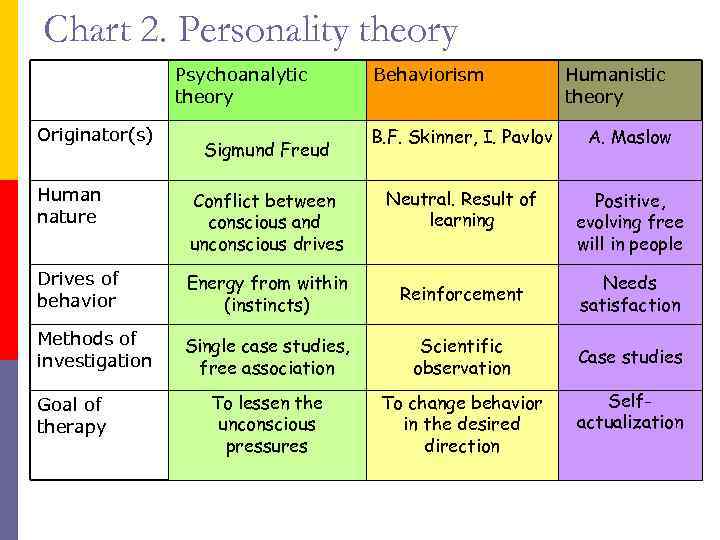
Chart 2. Personality theory Psychoanalytic theory Originator(s) Sigmund Freud Behaviorism Humanistic theory B. F. Skinner, I. Pavlov A. Maslow Neutral. Result of learning Positive, evolving free will in people Human nature Conflict between conscious and unconscious drives Drives of behavior Energy from within (instincts) Reinforcement Needs satisfaction Methods of investigation Single case studies, free association Scientific observation Case studies To lessen the unconscious pressures To change behavior in the desired direction Goal of therapy Selfactualization
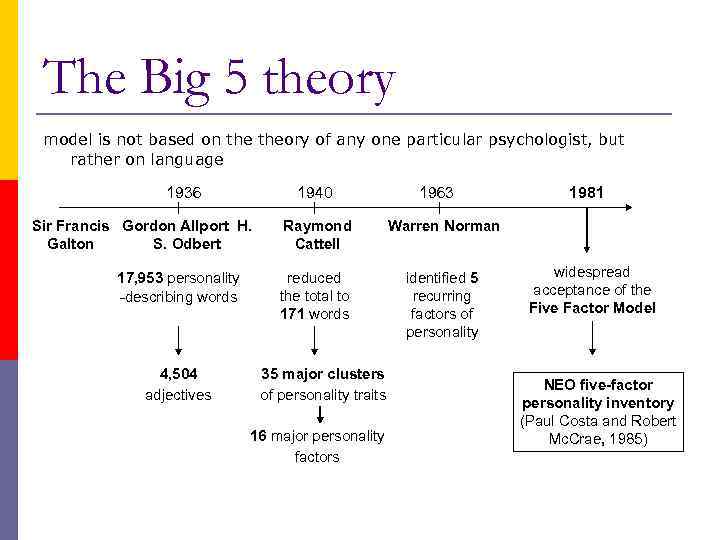
The Big 5 theory model is not based on theory of any one particular psychologist, but rather on language 1936 1940 Sir Francis Gordon Allport H. Galton S. Odbert 17, 953 personality -describing words 4, 504 adjectives 1963 Raymond Cattell Warren Norman reduced the total to 171 words identified 5 recurring factors of personality 1981 35 major clusters of personality traits 16 major personality factors widespread acceptance of the Five Factor Model NEO five-factor personality inventory (Paul Costa and Robert Mc. Crae, 1985)
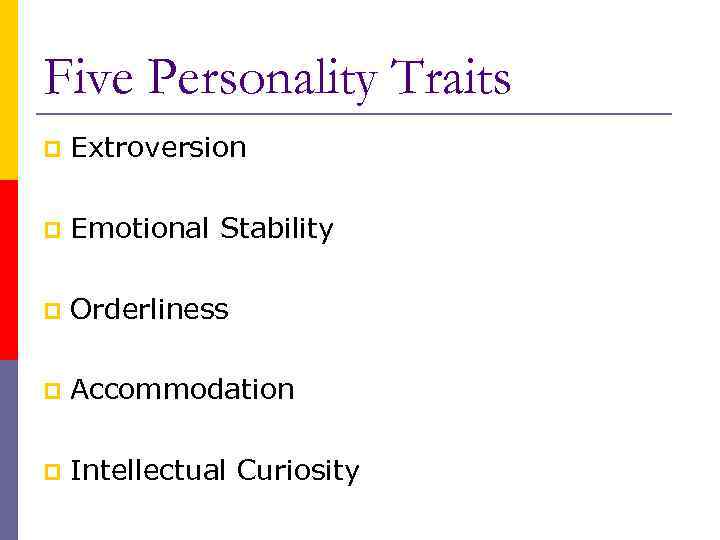
Five Personality Traits p Extroversion p Emotional Stability p Orderliness p Accommodation p Intellectual Curiosity